Amsterdam Light Festival | Route, Tickets, Timings & Complete Travel Guide
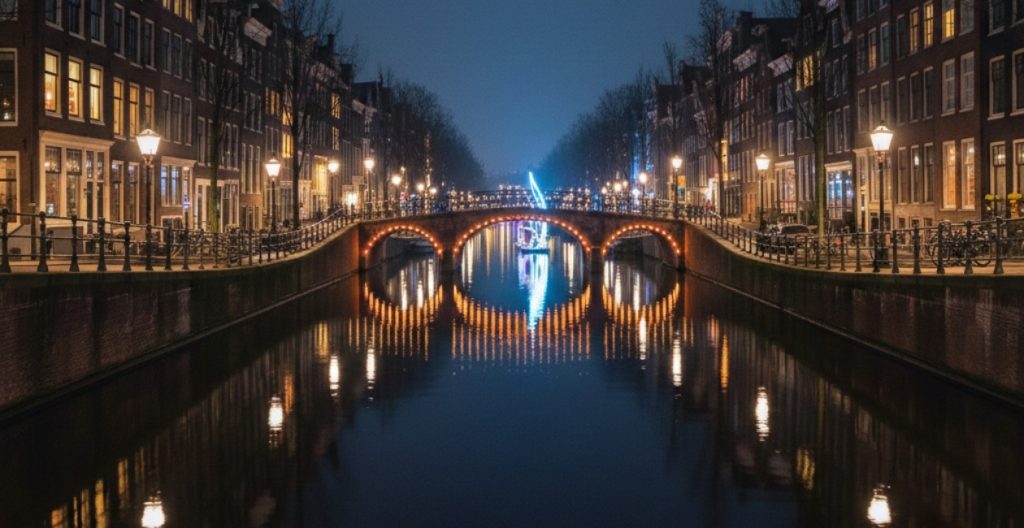
The Amsterdam Light Festival should definitely be on your travel itinerary if you’re thinking about visiting Europe in the winter. The city becomes an outdoor art gallery every year from late November to mid-January, complete with interactive artworks, light sculptures, glowing installations, and enchanted reflections on the canals. The festival has a dreamy and cinematic vibe. It is ideal for winter enthusiasts, whether you explore it on foot or by canal cruise. To help you enjoy the festival like a pro, this guide covers the precise routes, ticket types, best experiences, local advice, and travel planning. Key Takeaways: Every year, the Amsterdam Light Festival transforms the city into an outdoor gallery featuring 20–25 large-scale light artworks. It can be explored by boat, walking routes, or self-guided tours, each of which offers a completely distinct atmosphere and perspective. Depending on the duration, type of boat, and inclusions, tickets range from €18 to €32, depending on the boat operator. Unless you purchase an official map (€7.50) or participate in a guided walk (€15–€20), a walking route is free. The best viewing time is 5 pm – 10 pm, when reflections on the canals look magical for photography. Every year, the artwork is altered according to a theme, making each edition feel original, imaginative, and Instagram worthy. The festival routes are easily accessible if you stay close to Grachtengordel, Jordaan, Museumplein, or Nieuwmarkt. What is the Amsterdam Light Festival? The Amsterdam Light Festival (ALF) is an annual winter event. It is Europe’s most magical winter experiences.Every year in the winter, international artists create light-based artworks along the streets and canals as part of the Amsterdam Light Festival (ALF).It’s the ideal fusion of engineering, art, culture, and the famous canal charm of Amsterdam. It usually lasts 53–60 days. Features 20–25 art installations each year. Includes a theme, curated route, and interactive pieces. Best viewed by boat tours or walking routes. Attracts millions of tourists from all over the world. Amsterdam Light Festival 2025–2026 Dates & Timings Dates: End of November 2025 – Mid-January 2026 Lights On: Daily after sunset Timing: Usually 5 PM – 11 PM Special Days: Lights remain on till midnight during Christmas & New Year weekends. Best Ways to Experience the Amsterdam Light Festival There are two main ways to explore the festival: 1. Boat Route (Highly Recommended) The festival is designed to be seen from the water. Canal cruises give you the closest and clearest views. Why choose the boat tour? You pass directly under or beside installations. Warm boats = comfortable winter experience. No walking in cold winds. Audio guide included. Best for couples, families, senior travellers. Boat Tour Duration 60–75 minutes on average. Boat Tour Starting Points Most boats depart from: Amsterdam Central Station (East Side) Museumplein / Rijksmuseum area Amsterdam Amstel area 2. Walking Route (Budget-Friendly) A self-guided walking route lets you enjoy the installations at your own pace. Why choose the walking route? Free (if self-guided). Perfect for photographers. Lets you enjoy small cafés, Christmas markets, and canal views. You can explore narrow bridges and alleys the boats don’t access. Walking route time: 1.5 to 2.5 hours depending on pace. Amsterdam Light Festival Walking Route (Step-by-Step Itinerary) The route usually changes every year, but the general path follows Amsterdam’s historic canal belt. Here’s the most widely used route outline: Start Point: Oosterdok (Opposite NEMO Science Museum) This is where many installations begin. The waterfront area glows beautifully at night, with reflections dancing on the calm water. What you’ll see here: Large-scale sculptures Intro light installation Boats lined up for cruises City skyline lights Stop 2: Maritime Museum Bridge A picturesque arch bridge with beautiful festival visuals. What to expect: One of the most photographed installations Reflections in water Great for wide-angle shots Stop 3: Entrepotdok Canal A quiet, narrow canal with light artworks stretching between the buildings. Highlights: Suspended installations Moving light artwork Silent, peaceful ambiance Stop 4: Nieuwe Herengracht This area often hosts the biggest centerpiece artwork. You’ll find: Large interactive installations Color-changing light structures Drone-friendly area (follow local rules) Stop 5: Amstel River One of the most iconic sections of Amsterdam. What makes it special: Open water space = huge installations Photo-friendly bridges Stop for mulled wine or hot chocolate nearby Stop 6: Hermitage Museum / Magere Brug (Skinny Bridge) This glowing white wooden bridge becomes stunning under festival lighting. Perfect for: Couple photos Drone photography (where permitted) Slow walking + nighttime river views End Point: Stopera (City Hall & Opera House) The final part usually features immersive or message-based installations. Amsterdam Light Festival Tickets (Complete Breakdown) Boat Tour Tickets Average price: €22 – €29 (standard tourist boats) €35 – €45 (luxury heated boats) €50+ (private boat or small group tours) What’s included: Entry to water route Guided audio commentary Blankets on some boats Hot chocolate or drinks (depending on provider) Walking Route Tickets (Optional) You can walk the festival for free, but they also sell: Official Walking Map (€7–€10) Audio Guide App (€5–€8) Where to Book Tickets Book from: Official Amsterdam Light Festival website City boat companies: Blue Boat Lovers Canal Cruises Stromma Tours & activities platforms: GetYourGuide Viator Tiqets Pro Tip: Book at least 2–6 days earlier. As weekend cruises sell out fast. How to Reach the Festival Route From Amsterdam Central Station: Walk 5–10 minutes to the starting point Or take tram 26 or 14 From Schiphol Airport: Train to Amsterdam Central (15–20 minutes) Then walk or take a tram Food & Café Stops Along the Route Here are popular (and cozy!) winter stops: Café de Sluyswacht — Canal-view drinks Puccini Bomboni — Chocolates Bakers & Roasters — Amazing cakes Hannekes Boom — Wooden, rustic, waterfront Café de Plantage — Warm-lit, aesthetic Pro Tips to Experience the Festival Perfectly Wear warm layers .Amsterdam winds can feel icy. Carry gloves (your phone gets cold too!). Choose weekday evenings for fewer crowds. Take the boat route first, then the walking route. Carry a power bank — photos will drain the
Spiritual Villages in India That Promote Inner Healing
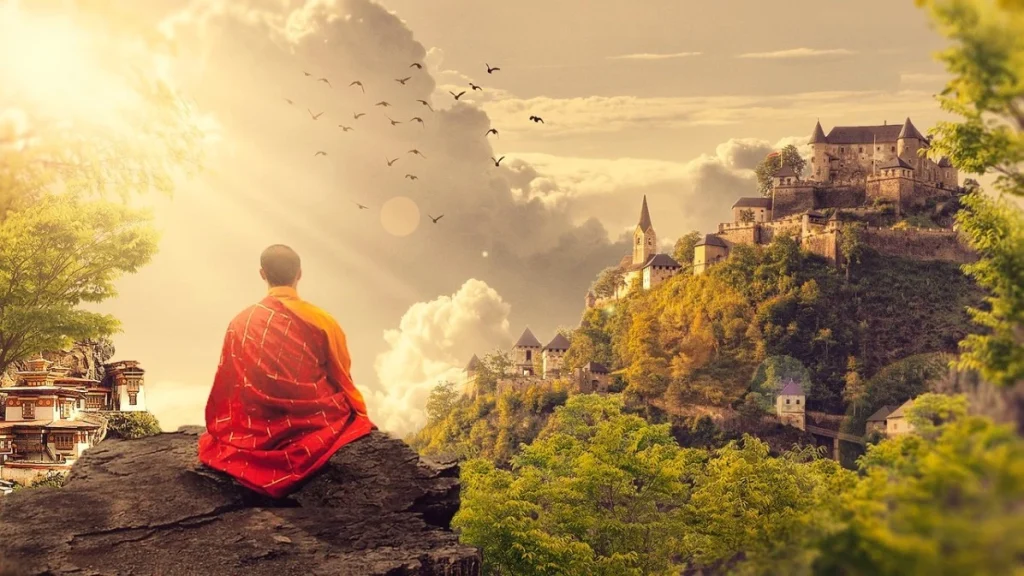
Many tourists are organizing wellness itineraries in 2025, which include spiritual walks through rural India, healing stays, and meditation retreats. These lesser-known villages teach you to live simply, slow down, and rediscover yourself. They are more than just tourist destinations. This comprehensive travel guide covers six of India’s most spiritual villages that genuinely encourage self-healing. 1. Auroville, Tamil Nadu – The Global Village of Conscious Living Why Visit: The concept of unity and inner transformation served as the foundation for Auroville. People come together to live sustainably and mindfully in this international township. Unique Highlight: If you’re into Yoga, meditation, pottery, and eco-workshops, then these all can be incorporated into a visitor’s customized healing schedule. Festivals: To celebrate Auroville Anniversary Day, every February, Auroville hosts meditation events and cultural performances. Foods: Expect plant-based, organic meals prepared using regional ingredients. Pro Tip: To adjust gradually, schedule a 3-day stay. Go to the morning meditation, and spend the evenings at the Matrimandir gardens. 2. Tawang Village Region, Arunachal Pradesh – Peace Amid the Himalayas Why Visit: The rhythm of monastery bells and clean mountain air helps in creating an atmosphere full of healing and mindfulness. It provides a tranquil fusion of natural beauty and Tibetan Buddhist culture. Unique Highlight: Visitors can walk through nearby hamlets, and soak in peaceful mountain sunsets. Participate in morning prayer sessions at the historic Tawang Monastery. Festivals: In January, the Torgya Festival includes masked dances that represent protection and purification. Foods: Enjoy momos, thukpa, and hot butter tea. Its healthy enriched nutrients make it ideal for healing at high elevations. Pro Tip: For peaceful reflection, eat light, drink lots of water, and go to a monastery for evening prayers. 3. Gokarna, Karnataka – The Coastal Sanctuary for Mindful Living Why Visit: Gokarna’s charm is in how it combines spiritual depth with beach tranquility. It is perfect for tourists looking for leisure as well as introspection. Unique Highlight: A leisurely coastal wellness itinerary includes visiting the historic Mahabaleshwar Temple, doing sunrise yoga by the sea, and strolling between beaches along picturesque cliffs. Festivals: Gokarna becomes a hub of devotion during Mahashivaratri. Foods: Try South Indian thalis, banana pancakes, fresh coconut water, Sattvic meals, and herbal teas. Pro Tip: For calm weather, go there between October and March. Reserve lodging close to Om Beach. 4. Rajgir, Bihar – Ancient Healing in the Heart of Magadha Why Visit: Rajgir, a timeless village renowned for its hot springs, Buddhist heritage, and serene hills, was once the capital of the ancient Magadha Empire. It is one of India’s first healing locations. Unique Highlight: Buddha preached at Vulture’s Peak, where you can meditate. You can also take a bath in the Rajgir Kund. Festivals: Every November, music, dance, and spiritual customs come together for the Rajgir Mahotsav. Foods: You stay energized and light throughout the day with simple Bihari meals like litti-chokha, sattu parathas, and seasonal vegetables. Pro Tip: Meditate in the vicinity of the Shanti Stupa. Be mindful of local traditions by wearing modest clothing and taking off your shoes when you’re close to shrines. 5. Meherabad, Maharashtra – A Retreat for Silence and Reflection Why Visit: Meher Baba, who was well-known for his teachings on love and silence, established Meherabad. His legacy is carried on by the village, which welcomes guests looking for simplicity as a means of achieving peace. Unique Highlight: You can read spiritual literature, stroll through peaceful fields, and meditate at Meher Baba’s Samadhi during the day. Festivals: Meher Baba’s Mahasamadhi is celebrated on January 31 of each year during the Amartithi Festival. Foods: Ashram kitchens prepare fresh Maharashtrian cuisine, including jowar roti, lentil dal, and seasonal vegetables. Pro Tip: Schedule your visit during Amartithi Week. Keep a journal with you at all times. 6. Spiti Valley Villages, Himachal Pradesh – The High-Altitude Haven Why Visit: The villages of Spiti, such as Kibber, Langza, and Dhankar, are tucked away in the Trans-Himalayan region and provide an unspoiled setting for profound spiritual healing. Unique Highlight: You can observe the Milky Way’s night sky illumination, learn meditation at isolated monasteries, and stay with local families. Festivals: The Tibetan New Year is celebrated at the Losar Festival with dance, chants, and blessings for rebirth. Foods: Taste warming dishes ideal for mountain climates, such as yak-butter tea, tsampa porridge, and barley soup. Pro Tip: For safer roads, travel between June and September. Bring a tea thermos, sunscreen, and altitude medication. Festivals of Healing Across India Auroville: Peaceful assemblies to foster creativity and solidarity. Tawang: Purification-symbolizing mask dances. Gokarna: The spiritual energy of Mahashivaratri by the sea. Rajgir: Peace festivals that combine music and Buddhism. Meherabad: Silent remembrance of Meher Baba. Spiti: Losar Festival welcoming new beginnings. Pro Tip: For more cultural and spiritual feel, plan your trip especially during regional festivals. Foods That Heal the Soul South India: Coconut-based curries, millets, and herbal teas. Himalayas: For strength, use barley, yak butter, and warm broths. Bihar & Maharashtra: Simple thalis that strike a balance between nutrition and flavor. Avoid overeating or processed food. Eat mindfully, chew slowly, and have gratitude. Pro Tip: Keep a reusable cutlery and bottle with you. Avoid single-use plastic. Travel Planner & Itinerary Ideas Day 1: Arrive in Delhi, Pune, or Guwahati on the first day, then relax. Day 2-3: Go to Gokarna or Auroville for yoga and relaxation. Day 4-5: Travel to Meherabad or Rajgir to participate in meditation sessions. Day 6-7: Conclude in Tawang or Spiti for mountain reflection and stargazing. Pro Tip: Before you travel, always check the climate. Include buffer days in your schedule. Frequently Asked Questions Q1. How long to stay? Three to Seven days. Q2. Are these open to beginners? Yes. It is open to beginners. Q3. When is the best time to visit? October to March. Himalayan villages in June to September. Q4. What is the average budget? ₹1500 – ₹3000 per day except Auroville and Spiti villages. Q5. Are these villages safe? Yes, it is safe. An invitation to slow
7 Days in Rajasthan: The Best Way to See the Land of Maharajas
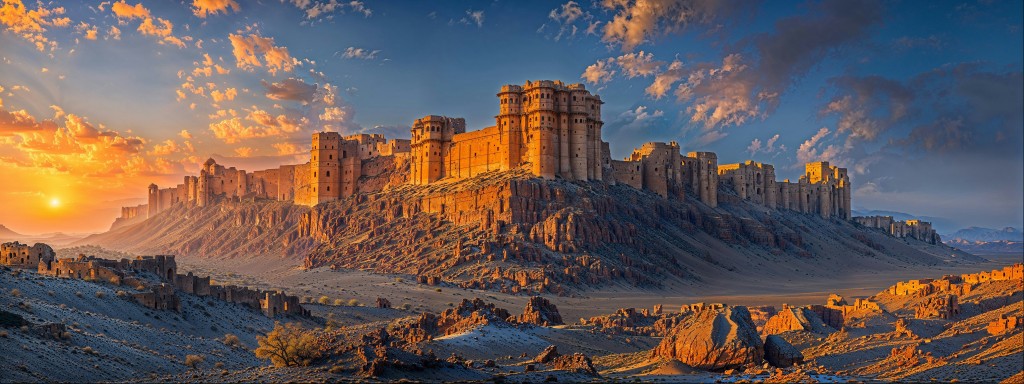
People call Rajasthan the “Land of Maharajas” for a reason. It’s a place where history isn’t just in books; it’s in the huge forts that protect old cities, the beautiful palaces where royalty used to live, and the lively culture that spills out onto every street. When you come here, it’s like stepping into a beautifully illustrated storybook full of stories of bravery, love, and unmatched beauty. I still remember my first trip here—the colours that hit me right away. The men wore bright turbans, the women wore shimmering saris, and the cities were all painted in their own unique colours: Jaipur in a warm blush of pink, Jodhpur in a cool, calming blue, and Jaisalmer in a radiant glow of gold. It’s a traveler’s paradise and a photographer’s dream. But let’s be honest, planning a trip to Rajasthan can be a lot of work. There are so many amazing cities and things to do that it’s hard to know where to start. How do you fit hundreds of years of history into one week? This is where this guide comes in. I’ve made the perfect 7-day Rajasthan itinerary that will give you a deep and rich experience of this amazing state. It includes both must-see sights and opportunities for real connection and discovery. So, get your bags ready and let’s go on a trip through the heart of royal India. A Few Important Tips Before You Go A little planning ahead of time can make your trip to Rajasthan go smoothly and be fun. When to Go: The best time to visit Rajasthan is in the winter, from October to March, when the weather is cooler. The weather is nice and great for seeing the sights. From April to June, the summers can be very hot. Getting Around: Trains and buses connect the state well. The best and most comfortable way to get around on this itinerary is to hire a private car with a driver. This way, you can stop wherever you want. What to Bring: Bring light cotton clothes for the day and a light jacket or shawl for the evenings when it gets cooler. You must have comfortable walking shoes! You should also bring sunscreen, a hat, and sunglasses to keep the sun off of you. A Royal Tour in 7 Days: The Perfect Itinerary for Rajasthan This plan is for a challenging but rewarding trip to Rajasthan’s most famous cities. Get ready for an adventure because it goes quickly! Day 1: Arriving in Jaipur, the Pink City Jaipur, the lively capital of Rajasthan, is where your journey begins. When you first step into the old city, you’ll see why it’s called the “Pink City.” The buildings are all painted a lovely terracotta pink, a colour that means welcome. After checking into your hotel In the Morning, go straight to the famous Hawa Mahal (Palace of Winds). In person, the building’s complicated, honeycomb-like front is even more beautiful. Royal women could watch street parades from this building without being seen. In the afternoon, go to the City Palace to see the heart of royalty. The architecture of this large complex is a lovely mix of Rajasthani and Mughal styles. The current royal family still lives in part of it. Don’t miss the beautiful gates in the inner courtyard; each one is a piece of art. Evening: Get lost in the chaos and colour of Jaipur’s markets. Johri Bazaar is known for its jewellery, and Bapu Bazaar is known for its textiles and leather goods. It’s a great place to buy souvenirs and get a sense of the city’s life. Foodie Corner: For dinner, go to a heritage restaurant like Chokhi Dhani and have a traditional Rajasthani thali. It’s a great way to experience the culture. Day 2: Jaipur—Palaces, Forts, and Stars Today is all about seeing the amazing forts and buildings that are just outside the main city. Get up early In the Morning and head to the beautiful Amber Fort (Amer Fort). This fort is stunning, sitting on a hilltop with a view of Maota Lake. For a truly royal experience, you can walk up, take a jeep, or ride an elephant to the entrance. In the afternoon, go back towards the city to see the Jantar Mantar, an amazing 18th-century astronomical observatory. It’s a UNESCO World Heritage Site, and it’s hard to believe how big and old the tools used to track celestial bodies are. End your day with a stop for a photo at the peaceful Jal Mahal (In the Evening). This beautiful palace looks like it floats in the middle of Man Sagar Lake. It looks especially nice at sunset. Pro Tip: When you go to Amber Fort, it’s a good idea to hire a licensed guide at the entrance. You will have a much more interesting visit if you hear their stories about the fort’s history, secret passages, and the lives of the Maharajas. Day 3: Jodhpur, the Beautiful Blue City Note for travellers: It takes about six hours to drive from Jaipur to Jodhpur. Get up early to get the most out of your day. Welcome to Jodhpur, the “Blue City.” As you get closer, you’ll see a sea of blue houses below the city’s strong protector, the Mehrangarh Fort. In the afternoon, go straight to the Mehrangarh Fort after you get there and check in. In my opinion, this is one of the most beautiful and well-kept forts in all of India. From a rocky cliff, it rises high above the city. The audio guide is great and tells great stories as you walk through the palaces and courtyards. In the evening, walk from the fort to the old city. Walk through the narrow, blue-painted streets and feel the charm of the Middle Ages. The busy Sardar Market near the Ghanta Ghar (Clock Tower) is a great place to end your day. It’s a great place to watch people and try local food. Foodie Corner: You have to
Ultimate Switzerland Itinerary for 7 and 10 Days
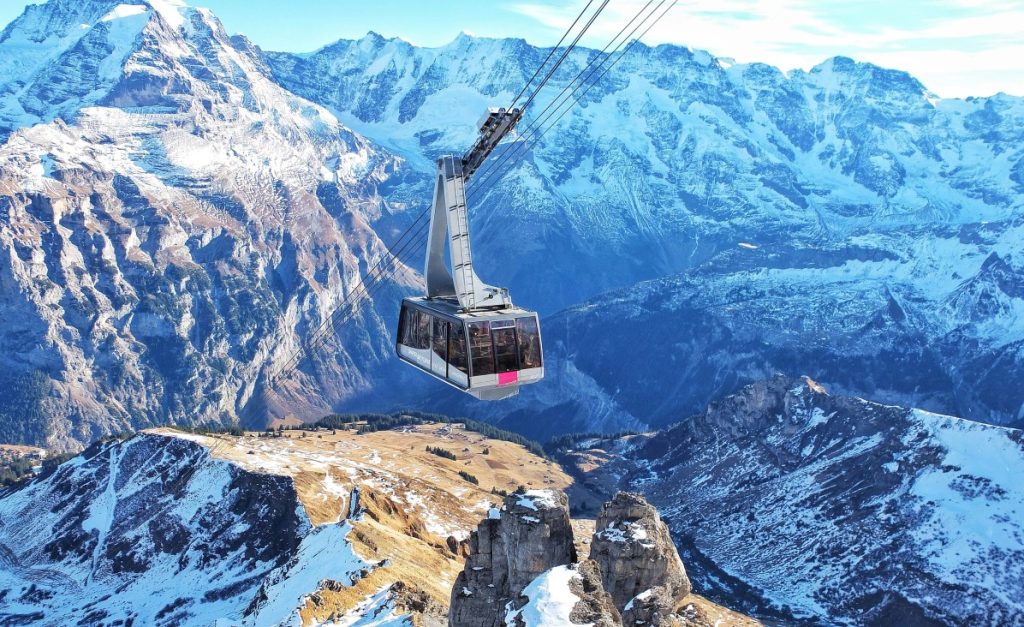
Switzerland is more than just a trip; it is an experience of a lifetime. The fantastic feeling of waking up to cow bells in alpine valleys, breathing the fresh mountain air, and watching the sun shine down on the snowy peaks is life-changing and unforgettable. Whether it is a honeymoon, solo trip, or a family vacation, having a good travel itinerary for travel in Switzerland will make sure you don’t miss a moment. When you have a Switzerland trip planner or curated tour packages you can experience iconic attractions, explore hidden gems, find adventure, and relax on one trip. If you need an example, look to Arjun and Meera from Mumbai, who had the chance to spend 7 days together enjoying Switzerland on their own terms—they went skiing in Zermatt, settled in for sunsets in Interlaken, and explored beautiful cities. Their story illustrates that if you plan thoughtfully, in the end you will have an adventure of several unforgettable moments. Understanding Switzerland – A Country of Contrasts Each Swiss city offers a unique flavor: Zurich: Modern luxury meets historic charm; perfect for shopping, riverside walks, and vibrant nightlife. Lucerne: Picture-perfect lakes, medieval streets, and easy access to Mount Pilatus and Mount Titlis. Interlaken: Nestled between two lakes, ideal for adventure sports and romantic escapes. Zermatt: Home to the iconic Matterhorn, ski slopes, and scenic hikes. Geneva: International culture, serene lake views, and world-class cuisine. The seasons also affect your experience: winter includes snow adventures, while summer includes hiking, festivals, and fun at the lake. You can build your trip around the weather and surrounding festivals to have an unforgettable trip that includes adventure, culture, and relaxation. Suggested 7-Day Switzerland Itinerary Day 1 – Zurich: Explore Old Town, Bahnhofstrasse, and the Limmat River. Evening dining or nightlife options. Day 2 – Lucerne: Walk Chapel Bridge, visit Mount Pilatus or Titlis, and enjoy a lakeside dinner. Day 3 – Interlaken: Paragliding, boat rides on Lake Thun/Brienz, boutique stays for honeymooners. Day 4 – Jungfraujoch: Train to Europe’s highest station, Ice Palace, and Aletsch Glacier views. Day 5 – Zermatt: Gornergrat Bahn, skiing or hiking, fondue dinner in a chalet. Day 6 – Geneva: Jet d’Eau, Old Town, lakeside promenades, and chocolate boutiques. Day 7 – Montreux: Château de Chillon, Lavaux vineyards, lakeside strolls before departure. This itinerary balances cities, mountains, lakes, and cultural experiences without rushing. Extending to a 10-Day Itinerary Longer trips allow exploration of offbeat destinations: Lauterbrunnen: “Valley of 72 Waterfalls” and Trümmelbach Falls. Bern: UNESCO-listed Old Town, Zytglogge Clock Tower, and local cuisine. Lausanne: Olympic Museum, lakeside promenades, vineyards, and wine tours. Gruyères: Famous for cheese, medieval castle, and culinary experiences. A 10-day itinerary offers more immersion, perfect for honeymooners, families, or solo travelers seeking adventure and relaxation. Activities & Experiences Adventure & Outdoor: Skiing, snowboarding, hiking, paragliding, cycling, and mountain biking. Scenic Rides & Water Fun: Glacier Express, Bernina Express, lake cruises, kayaking, and paddleboarding. Cultural Experiences: Medieval villages, local food and wine tours, museums, galleries, and festivals. Curated Switzerland tour packages or a Switzerland trip planner make integrating these experiences simple. Transport, Accommodation & Budget Tips Transport: Swiss Travel Pass covers trains, buses, and boats; panoramic routes include Glacier Express and Bernina Express. Accommodation: Options range from hostels and boutique hotels to luxury chalets and honeymoon packages. Budget Travel: Travel off-peak, use Airbnb or guesthouses, enjoy ready-to-eat meals, and combine destinations efficiently. Honeymoon & Romantic Highlights Switzerland is a top honeymoon destination: Chalet stays in Zermatt or St. Moritz. Scenic train rides on Glacier Express or Bernina Express. Sunset lake cruises and luxury spa retreats. Private wine and chocolate tastings. Packages from The Tarzan Way provide curated itineraries for romance, adventure, and cultural immersion. FAQs & Tips Best time to visit: April–June (spring), July–September (summer), Dec–Feb (winter). Top cities: Zurich, Lucerne, Geneva, Interlaken, Zermatt, Montreux, Bern. Suitability for budget travelers: Yes, with smart planning and Swiss Travel Pass. Trip length: 7–10 days for highlights, longer for hidden gems. Safety: Switzerland is very safe for solo travelers. Switzerland offers the ideal mix of relaxation, excitement, romance, and culture; every traveler will find moments they will remember. Besides beautiful mountains covered in snow, breathtaking lakes, vibrant cities, and relaxing villages, Switzerland is everything a traveler could hope for. You can plan aspects of your trip to Switzerland through an itinerary, guided tour packages, or honeymoon packages that combine all three elements of sightseeing, adventure, and relaxation. Begin your experience and enjoy special moments in memorable landscapes. Ready to plan your dream Swiss adventure? Scroll down to explore the complete Switzerland travel guide and uncover the perfect 7-day and 10-day Switzerland itinerary — featuring breathtaking cities, alpine adventures, scenic train rides, and hidden gems waiting to be discovered. Your Swiss Dream Awaits – Crafting the Perfect Itinerary Waking up to cowbells ringing in the valleys, breathing in the fresh alpine air, and watching the morning sun lightly touch the snow-capped peaks is something magical. Switzerland is not just a place, it’s a sensation. Whether you’re a couple on your honeymoon, a solo traveler, or a family vacationer, a thoughtful Switzerland travel itinerary will help you make the most of your trip to Switzerland. You may sit and sip coffee beside Lake Lucerne, hike in the surrounding Alps, or take a ride on a panoramic train. In Switzerland, with each bend comes another postcard perfect moment. Take for example Arjun and Meera, a couple from Mumbai who were newlywed and wanted to go to Switzerland, they didn’t want to just look at postcards, they wanted to feel Switzerland. With a Switzerland trip planner, they were able to spend 7 days discovering cities, mountains and lakes at their own pace. From skiing in Zermatt to catching a sunset over Interlaken, they found that with a detailed plan and itinerary that it is possible to live innumerable stories in one trip. To make your own dream itinerary come alive, this Switzerland travel guide walks you through everything – from breathtaking cities and
Instagram-Worthy Travel in India (2025): Most Photogenic Spots + Guide
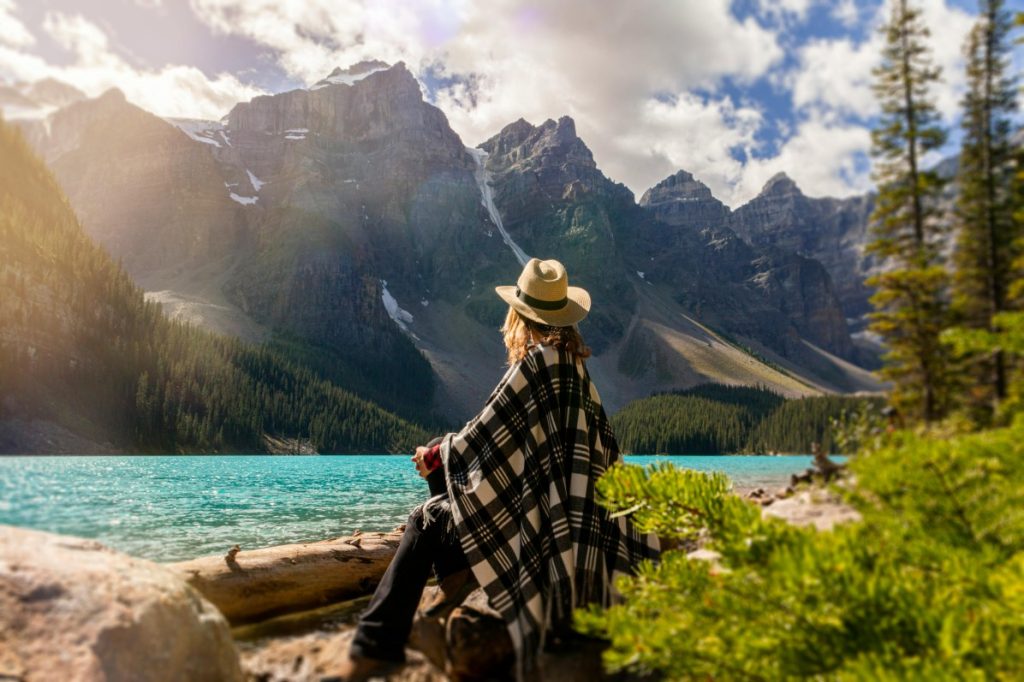
Traveling is now more than just crossing places off your list; it’s also about catching moments to post on Instagram. With India’s abundance of breathtaking scenery, you’ll need to have a picture-perfect travel planner’s mindset to capture every moment, from street-vibe motion to sunrise reflections. No matter if you’re a solo traveler or first time visitor, this guide will help you discover all the popular photogenic destinations of India, along with the best tips and advice regarding when to visit, ideal time, and festivals to attend for best travel photography. 1. Golden Hour Landscapes: Desert, Mountains & Water India offers breathtaking scenery that is worth a double-tap and these locations are one of such most popular spots on travel photography lists. Unique Highlights: For dramatic, minimalist frames, desert dunes provide silhouettes, Himalayan valleys provide layered mountain backdrops, airy skies and lakes create symmetry that works for both photos and reels. Best Destination to Experience: Visit places like Jaisalmer, Pangong Lake, Spiti Valley, Nubra Valley, Rann of Kutch. Pro Tip: Golden hour is the best time for photography. Use the panorama mode. Keep a wide-angle lens. 2. Vibrant Cities & Colourful Streets The pastel-shuttered lanes of Pondicherry, the vibrant pinks of Jaipur, and the chaotic charm of Delhi’s Chandni Chowk are all excellent photogenic locations for narrative photographs. Unique Highlights: Context is added by architectural backgrounds. Street scenes are ideal. Color-coding lanes or houses (think pink, mustard, or turquoise) are best for engaging grids. Best Destination to Experience: Visit places like Jaipur, Pondicherry, Delhi (Chandni Chowk), Varanasi (Ghats & Alleys), Jodhpur (Blue City). Pro Tip: For soft architectural light, visit shortly after sunrise, to see double-colored, reflective wet pavements visit after rain. 3. Heritage + Culture Scenes Heritage sites provide layers of meaning in every frame, which is ideal for a travel planner who wants both beauty and story. Unique Highlights: Ruins, architecture, and carvings provide interesting shadows and natural frames. Better lighting and fewer crowds can be found when visiting in the early morning. Best Destination to Experience: Visit places like Hampi, Khajuraho, Agra (Taj Mahal & Fort), Udaipur (City Palace), Ajanta & Ellora Caves. Pro Tip: Look into photography permissions beforehand. Video and tripods are prohibited in some places. 4. Beaches, Backwaters & Island Dream Scenes If you want to travel with a “relax-and-shoot” mentality, India’s beaches and serene waterways provide both peace and visual appeal. Unique Highlights: Open horizon lines, gentle waves, and water reflections combine to create serene images. Excellent background is available for lifestyle photos. Around coastal towns like Fontainhas and Goa, pastel-colored streets add diversity. Best Destination to Experience: Visit places like Radhanagar Beach (Havelock Island), Kerala Backwaters (Alleppey), Goa, Varkala, Gokarna. Pro Tip: If you plan to take pictures near water, bring a waterproof phone pouch. 5. Festivals, Local Food & Authentic Moments Pictures of people, events, and regional cuisine bring life to our feed. Whether it’s a Rajasthani festival or Delhi street food, these occasions foster genuine engagement in Instagram. Unique Highlights: Local customs, fairs, and festivals like Diwali offer dynamic, vibrant, and emotionally charged scenes. Local food, such as regional specialties and street vendors, gives your grid and story more flavor. Authentic interactions provide distinctive highlights. Best Destination to Experience: Visit places like Jaipur (Holi & Teej Festival), Delhi (Street Food & Fairs), Varanasi (Ganga Aarti), Pushkar (Camel Fair), Kolkata (Durga Puja). Pro Tip: Get the consent before taking close-ups. To separate emotion, use a prime lens or a zoom to a moderate extent. Travel Planner Checklist & Packing for the Photo Hunt Unique Highlights: Always have an extra SD card or memory and a portable charger with you. Carry a waterproof bag or pouch, a spare lens cloth or lens cleaner, and a light jacket or scarf for early morning shoots (particularly on the coast or in the hills). Pro Tip: Each day, create a loose “photo itinerary” by planning one or two important shots (local market, golden hour), allowing extra time for impromptu moments. Best Time for Photography Shoot in India When planning a trip to India, timing is crucial. The light and mood you want your pictures to capture will determine the ideal time for a photography shoot. Winter (October to February) It’s perfect for outdoor shoots because of the clear skies, bright sunshine, and comfortable weather. Best Destinations: Spots like Jaipur, Delhi, Agra, Varanasi, Rann of Kutch, and Goa. Highlight: The gentle, diffused light from the low sun angle is ideal for architecture and portraiture. Summer (March to June) Summer brings vibrant colors and fewer crowds, despite the heat. This season brings out the beauty of the Himalayan landscapes and hill stations. Best Destinations: Ladakh, Spiti Valley, Darjeeling, Sikkim, and Ooty. Highlight: Glacial lakes and snow-capped mountains shine bright during early morning. Monsoon (July to September) Monsoon shots are the best for drama and mood. Anticipate a lot of greenery, mist, and reflections. Best Destinations: Spots like Kerala backwaters, Coorg, Munnar, Meghalaya. Highlight: Soft, cloudy skies soften harsh shadows. It is perfect for narrative shots. Pro Tip: Schedule your activities around sunrise and sunset. The blue hour intensifies contrast and mood, while the golden hour adds warmth. Festival Frames: Capture India in Celebration Holi: Festival of Colours (March) Powder clouds of pink, yellow, and green create impromptu and vibrant frames. Where: Mathura, Vrindavan, Barsana, and Jaipur. Unique Highlight: Early morning temple processions and laughter-filled crowd scenes. Pro Tip: Use a fast shutter speed. Protect your phone or camera with a waterproof case. Diwali: Festival of Lights (October–November) With the use of fireworks, golden lamps, and festive clothing, everything seems to be glittery. Cities are transformed into glittering canvases. Where: Places like Varanasi, Jaipur, and Delhi. Unique Highlight: Take pictures of diyas by rivers or houses that are lit up at night. Pro Tip: To prevent blur in low light, use the night mode or manually adjust the ISO. Pushkar Camel Fair (November) Travellers who enjoy earthy, rustic frames, this desert fair is must-go to spot. Where: Places
Explore Bali Beyond Ubud: Hidden Beaches & Villages
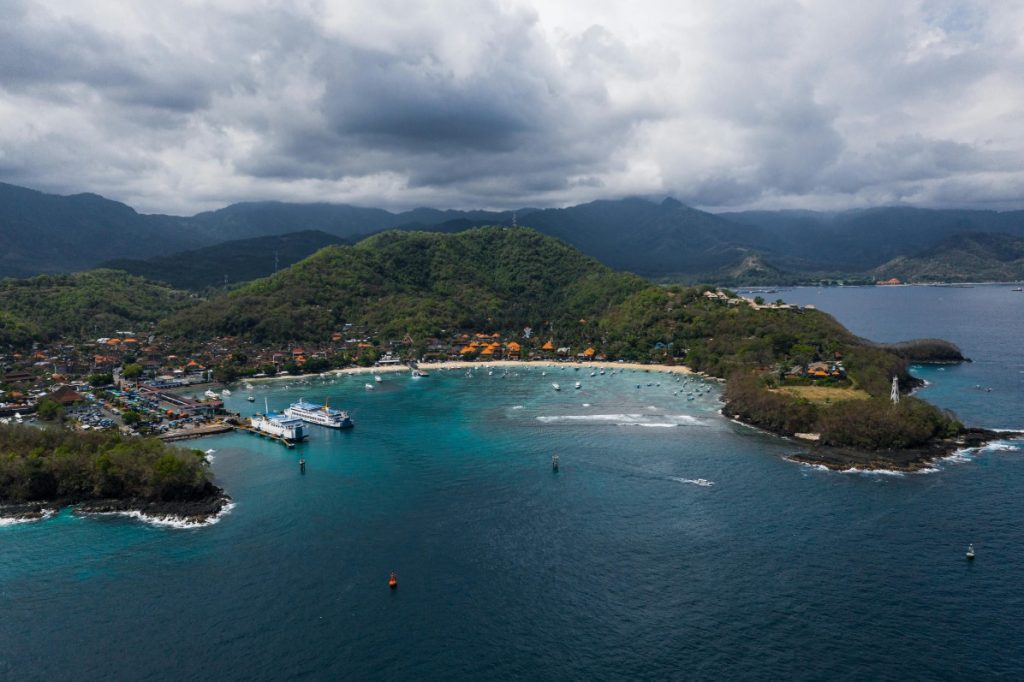
Most people visiting Bali will think of rice terraces and yoga retreats in Ubud, but the island’s true beauty is often found away from the common hotspots. Bali offers hidden beaches, traditional villages, waterfalls, and adventure trails, which underpin a cultural, nature, and local life-filled Bali adventure for all visitors to experience. Utilize a Bali travel planner or Bali trip planner to help ensure that you discover Bali’s hidden gems efficiently and in a meaningful way. Offbeat Beaches Canggu Bali: Surf, yoga, and sunset vibes! With hip cafes, smoothie bowls, and live music, Canggu is perfect for Bali solo travel or couples. Sanur Bali: Calm, family-friendly, and perfect for traveling the beachfront by bike. It is also the gateway to see Nusa Lembongan and Nusa Penida for an island getaway. Nusa Dua Bali: Home to luxury resorts, white sand beaches, and cultural experiences such as Museum Pasifika, Nusa Dua is perfect for Bali honeymoon packages all inclusive. Jimbaran Bali: Known for its sunset seafood dinners on the beach, Jimbaran is a must-visit for couples and families traveling together. Hidden Villages & Cultural Escapes Sidemen Village: Surrounded by stunning rice fields and offers weaving workshops and homestays. This is the perfect destination for the Bali honeymoon itinerary and provides a peaceful and authentic experience. Penglipuran Village: Regarded as one of the cleanest villages in Bali and continues to maintain its traditional architecture and local traditions. Tabanan & Jatiluwih Rice Terraces: UNESCO-recognized rice terraces that are perfect for an early morning walk, taking photos, and engaging with local culture. Adventure Trails Mount Batur Trek: Trekking to the summit of Mount Batur for sunrise views over the lake and volcano. Moderate difficulty; guided treks recommended. Rice Terraces and the Tegallalang: Walk paths to see the rice terraces or just be present to see produce agriculture and interact with farmers doing traditional irrigation. Waterfalls: Tegenungan (easy access), Tukad Cepung (different – hidden cave), Sekumpul (remote jungle). Wellness & Yoga Retreats Ubud Outskirts: Forest sanctuaries for meditation, healing, and spiritual connection. Canggu: Surf-friendly yoga studios and morning beach sessions. North Bali: Less touristy, perfect for detox, wellness, and mindful relaxation. Where to Stay Budget: Homestays located in Sidemen or Sanur to experience authentic local life. Mid-range: Boutique villas in Canggu or Seminyak to provide comfort and cultural experience. Luxury: Spa resorts located in Uluwatu, Nusa Dua, or Jimbaran for Bali honeymoon packages with everything included. The Tarzan Way offers curated stays connecting you to culture, hidden gems, and immersive adventures. Bali Nightlife & Food Scenes Seminyak: Upscale beach clubs and live music. Pair with spa or cycling tours. Canggu: Night markets, cafés, and acoustic music venues for solo travelers and digital nomads. Jimbaran & Sanur: Sunset dining and relaxed evenings. Local flavors include Nasi Campur, Lawar, Bebek Betutu, and Sate Lilit, best explored through food tours. Suggested 7–10 Day Bali Itinerary Day 1–3: Ubud, Sidemen, Mount Batur sunrise trek, Tegallalang rice terraces. Day 4–5: Canggu, Seminyak, Uluwatu, Jimbaran beach. Day 6–7: Nusa Dua, waterfalls, Sanur, optional island hopping. Optional Days 8–10: Tabanan exploration, workshops, spa retreats, and shopping. Check Complete Bali Itinerary (5, 7, 10 Days) for details. Best Time to Visit Bali April–June: Dry season, ideal for beaches and waterfalls. July–September: Peak season, festivals, and nightlife. October–March: Rainy season, perfect for wellness and spa retreats. Travel Tips Use scooters or local drivers for navigating the area. Remember to bring small bills in IDR for local shopping. Lightweight clothing, swimwear, hiking shoes, and yoga clothes are recommended. Dress modestly at temples and observe local customs. Bali is a rich tapestry of beaches, villages, waterfalls, and temples. Slow down, discover hidden paths, and participate in local life. With experiences curated for you from The Tarzan Way, let your Bali trip be a blend of adventure, culture, wellness, and romance. Begin your hidden Bali adventure today! Ready to dive deeper? Scroll down to explore the complete Bali travel guide and uncover every hidden beach, village, and local experience waiting beyond Ubud. Beyond Ubud – The Real Bali Begins Here When most people think of Bali, they think of Ubud – rice terraces, yoga, and a spiritual sense of calm. For Mira and Karan, who first traveled to Ubud on their honeymoon, Bali was full of secrets that went beyond the obvious postcards. On their second day in Ubud, they left the busy streets and went off the beaten path. They drove before the sun had finished rising over the horizon as they crossed emerald rice paddies, small rivers glistening in the sunlight, and tiny villages watching time pass without visitors. This was the other side of Bali; an island full of stories, traditions, and landscapes that many visitors never see. Bali is not just a group of resorts and temples, it is a living mosaic of experiences waiting to be discovered. If you want to plan a trip like Mira and Karan did in Bali, use a Bali travel planner or Bali itinerary planner. A properly organized Bali itinerary will give you time to visit hidden beaches, ancient villages, and adventure trails, while also capturing the true magic of the island. For first-time visitors, the Bali Travel Guide 2025 – The Ultimate Planner for Your Dream Trip provides detailed tips on transport, cultural etiquette, and must-visit spots. The Allure of Hidden Bali There exists a Bali beyond Ubud, and the busy streets that accompany most tourist centers. This is a Bali where mornings are spent smelling frangipani, witnessing locals work in rice paddies, and fishermen throwing their nets in a quiet cove. Visiting some remote corners of the island can give you: Quiet beaches like Balangan or Bingin, where the ocean seems endless. Authentic villages preserving centuries-old crafts and customs. Adventure trails ranging from volcano treks to jungle waterfalls. Wellness escapes tucked away in quiet corners, perfect for solo travelers or honeymooners. When you plan with a Bali vacation planner or tour packages to Bali, you can create a travel balance of adventure, culture, and relaxing
Top Remote Work Destinations: India & Global Picks
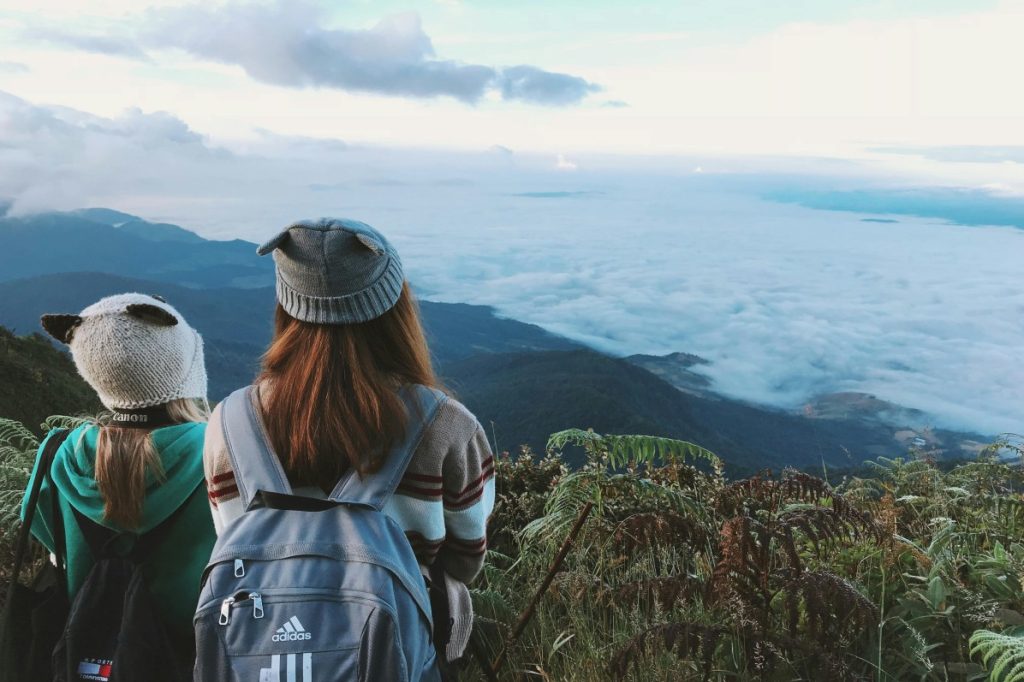
By 2025, remote workers won’t have to decide between productivity and travel. Imagine working from a chic European café, a beachside villa, or a mountain cottage. This blog is your go-to resource for workation travel planning, offering a combination of SEO-rich advice and an itinerary to assist you in choosing locations (both domestically and internationally), estimating expenses, and organizing a smooth remote work vacation. This remote work travel guide covers everything, whether you’re looking for cities, beaches, or mountains. 1. Criteria for Choosing a Good Workation Spot Here are the main filters you should use before diving into workation destinations: Reliable power backup and internet Coworking spaces and cozy work arrangements Recreation and local culture in balance Stay permits and visa friendliness Living expenses and the affordability of housing Pro Tip: Before making a reservation, inquire about upload and download speeds from hosts, look up reviews regarding power outages, and ask for a specific desk or quiet corner. 2. Top Workation Destinations in India Here is the list of top workation destinations in India: 2.1 Goa (North & South) Goa is still the best place to work and play. There are a lot of cafes and coworking spaces in the Anjuna, Vagator, and Saragoo areas. There are more peaceful areas and places to stay in Goa. Excellent balance between working in the mornings and taking walks on the beach or listening to live music in the evenings. Pro Tip: Book a villa or guesthouse with a generator or UPS. Avoid beach shacks without backup electricity. Verify that your room has Wi-Fi, not just the common areas. 2.2 Uttarakhand: Rishikesh, Nainital, Mukteshwar In the Tapovan, Laxman, and Jhula areas, Rishikesh combines a spiritual atmosphere with cafes. Nainital and Mukteshwar provide calmer work environments and serene forest/lake views. Pro Tip: Mobile signals vary in hilly terrain. If necessary, keep a 4G hotspot and a signal booster with you. 2.3 Himachal & Lesser-Known Valleys Jibhi (Banjar Valley): A unique, peaceful, and rising workation gem in the Banjar Valley. Sainj Valley, Kalga, Janjehli: Affordable, tranquil, and perfect for extended visits. Manali / Old Manali: Digital nomads are familiar with Manali, also known as Old Manali. Pro Tip: Altitude, temperature, and heat all have an impact on equipment in mountainous regions. Carry extra cables and travel adapters, and use surge protectors. 2.4 Other Indian Gems: Coorg, Darjeeling, Pondicherry Coorg, Karnataka: Nature hikes, peaceful retreats, and stays on coffee plantations. Darjeeling, West Bengal: misty hills, tea gardens, serene working environment. Pondicherry: slower tempo, seaside cafes, and French colonial streets. Pro Tip: Always look for monsoon or seasonal windows. Off-peak months frequently offer better bargains and fewer crowds in the hill and coffee regions. 3. Top Workation Destinations Abroad Here is the list of top workation destinations at abroad: 3.1 Southeast Asia: Bali, Chiang Mai Bali, Indonesia: Ubud and Canggu are very well-liked by digital nomads in Bali, Indonesia. Chiang Mai, Thailand: The expat community, coworking culture, and affordability of Chiang Mai, Thailand. Pro Tip: Verify permits and visa requirements. Visas for digital nomads are now available in many countries. Additionally, check the internet when you get there and switch to a backup if necessary. 3.2 Europe: Lisbon, Barcelona, Tallinn Lisbon, Portugal: River views, pastel houses, robust nomadic infrastructure. Tallinn, Estonia: clean infrastructure, tech-friendly, and digital services. Barcelona, Spain: It is a seaside city with a thriving coworking community and cafe culture. Pro Tip: Because Europe tends to be more expensive, pick out more affordable neighborhoods and longer-stay deals. Verify the time zone overlap for your employers and clients as well. 3.3 Latin America: Medellín, Playa del Carmen Medellín, Colombia: A “City of Eternal Spring” with a pleasant climate, a vibrant café culture, and excellent connectivity. Playa del Carmen, Mexico: Beach, jungle, and coworking spaces in Playa del Carmen, Mexico. Pro Tip: Verify that your destination is covered by your travel and health insurance. Have a backup eSIM and a local SIM on hand at all times. 4. Sample Itineraries & Duration Ideas 4.1 India Workation Itinerary (7–10 days) Day 1–2: Arrive, get settled, and check connectivity Day 3–6: Work as usual with scheduled breaks (spend the evenings exploring local sites) Day 7:Rest, local sightseeing, and a buffer day Optional Day 8–10: Travel to neighboring locations and modify work schedules 4.2 Abroad Workation Itinerary (10–14 days) Day 1–2: Jet lag, neighborhood exploration, and coworking space discovery on the first two days. Day 3–9: Core work time, schedule outings for weekends Day 10–12: Longer local trips (day tours, nearby towns) Final Day: Wrap work, pack, depart Pro Tip: Avoid scheduling heavy tasks on the day you arrive or depart; instead, always allow buffer days at the beginning and end of your trip. Utilize those for recovery or setup. 5. Cost, Budget & Planning Tips Accommodations (homestays, boutique hotels, or guesthouses) Fees for coworking spaces and cafés Local transportation, food, and SIM/internet top-up Costs of a visa or permit Travel and health insurance When compared to city living, many places to work in India can be reasonably priced. Costs vary greatly abroad; Southeast Asia is typically less expensive than Europe or Latin America.. Pro Tip: Always negotiate for weekly or monthly stays, as these frequently offer a 20–30% reduction over nightly rates. Additionally, pick lodgings that offer “long stay” or workation packages, choose accommodations with workation packages. 6. Workation Essentials & Productivity Hacks Reliable backups: external battery, portable Wi-Fi Noise cancellation (white noise app, earphones) Strict routines and time blocking (mornings for deep work) Combination of local SIM and eSIM Pro Tip: Make use of the “office hours” model. Set aside 2-3 hours for meetings and calls, and make sure that these times are unoccupied. Additionally, always keep a power bank, an extra charger, and a USB hub with you. Frequently Asked Questions (FAQs) Q1. What is the average cost of a workation per day? The destination determines this. A daily budget of ₹1,500 to ₹4,000 may be adequate in India (accommodation + food + necessities). Depending on
Best Time to Visit Goa for Parties vs Peace
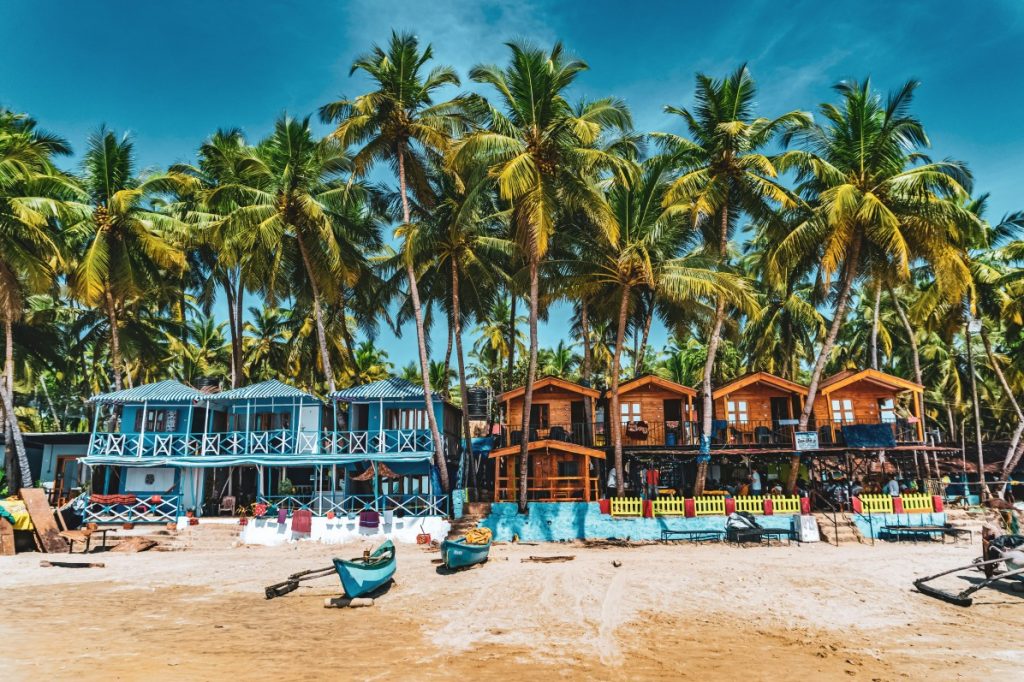
If you ask ten different travelers, “When’s the best time to visit Goa?” you’ll probably get ten different answers. For some, Goa means neon-lit beaches, buzzing nightclubs, and sunrise parties. For others, it’s sipping chai on a quiet shore, listening to waves instead of loudspeakers. The truth is – Goa has two faces. And the best time to visit depends on whether you’re chasing parties or peace. This blog will help you decide when to pack your bags for a vibrant Goa trip or a laid-back getaway. We’ll talk about seasons, experiences, stays, and even hidden gems. Along the way, I’ll also share a few insider links from other detailed guides (because Goa is too big for one blog!). And if planning feels overwhelming, you can always try The Tarzan Way, an AI-powered personalized travel itinerary planner that builds your Goa itinerary around your vibe – whether you’re a party animal or a peace-seeker. Goa for Parties – The Vibrant Side When people think of Goa tourism, the first thing that pops into mind is its electrifying nightlife. From December to January, Goa turns into a carnival of music, dance, and endless celebrations. Best time for parties: November – February December & New Year’s Eve → The most happening season, but also the most crowded and expensive. Sunburn Festival (usually in December) → Asia’s biggest electronic dance music festival. Christmas Week → Goa turns into a non-stop party zone. Must-try experiences for party lovers: Clubbing hotspots: Tito’s, Mambo’s, and LPK Waterfront. Beach parties: Anjuna, Vagator, and Baga beaches. Late-night cafes: Curlies and Shiva Valley. This is where Goa nightlife really shines. If you’re wondering about the things to do in Goa at night besides clubbing, try a night cruise on the Mandovi River or a midnight beach walk. For a detailed look at the party scene, check out our blog Goa’s Nightlife: A Guide to the Lit Nightlife. Goa for Peace – The Serene Side Now, let’s flip the coin. Beyond the rave music and crowds, Goa hides a quieter, soulful personality. If your idea of travel is watching sunsets, practicing yoga, or strolling along empty beaches, you’ll love the off-season. Best time for peace: June – September (monsoon) or October – early November Monsoons bring lush greenery, waterfalls, and far fewer tourists. October is shoulder season – less crowded, but still great weather. Where to find peace: South Goa → Palolem, Agonda, and Colva beaches are serene and less commercial. Hidden beaches → Butterfly Beach, Kakolem Beach (worth the trek!). Retreats → Yoga, meditation, and Ayurveda centers across Goa. If you’re traveling with family, you’ll love the family-friendly beaches in Goa – they’re cleaner, calmer, and safer for kids. For a deeper dive, explore our guides: Best Hidden Beaches in Goa for Peaceful Escape!! South Goa Unplugged: Exploring the Quieter Side Parties vs Peace: When Should You Go? Here’s a quick breakdown so you can match your vibe to the right season: For Parties (Peak Season: Nov–Feb): Bustling nightlife International tourists Higher prices for flights & stays Packed beaches For Peace (Monsoon & Shoulder Season): Quiet beaches and roads Lush green landscapes Affordable stays Perfect for slow travelers & families If you’re building a Goa itinerary, think about what matters more to you: dancing till dawn or waking up to the sound of waves with no one around. Our guide Top Attractions to Include in Your Goa Travel Itinerary can help you mix both worlds. Where to Stay – Party vs Peace The type of accommodation you choose will also depend on your vibe. For Party Lovers: Beachfront resorts in North Goa → Perfect for quick access to clubs and bars. Party hostels → Zostel, The Bucket List Hostel, and other backpacker hostels keep the fun going. Luxury villas → If you’re with a group, renting a villa near Baga or Anjuna keeps you close to the nightlife. For Peace Seekers: Budget-friendly hotels in North Goa → Tucked away from crowds but still accessible. South Goa resorts → More private, surrounded by nature. Heritage stays → Portuguese-style villas or boutique homestays. Whether you’re eyeing Goa resorts for a luxurious vibe or cozy Goa hotels for affordability, Goa has it all. Curious about combining work and leisure? Check out 13 Best Places to Have an Amazing Workation in Goa. Planning Your Goa Trip Now, here’s the tricky part – planning. Should you go for Goa packages or build your own? Packages are convenient, but they often stick to touristy spots. If you prefer something unique, creating your own itinerary might be better. That’s where The Tarzan Way can help again. It’s designed to personalize your Goa trip – whether you want bar-hopping nights or lazy beach mornings. (And yes, it saves you from endlessly scrolling Google Maps!). FAQs 1. What is the best time to visit Goa for nightlife? The peak season from November to February is best for experiencing Goa nightlife, especially December during Christmas and New Year. 2. Which season is best for a peaceful Goa trip? The monsoon (June–September) and shoulder season (October) are perfect for peaceful, crowd-free travel. 3. Are there budget-friendly hotels in North Goa near the beach? Yes, North Goa has plenty of budget-friendly hotels close to beaches like Anjuna, Vagator, and Morjim. 4. What are the top things to do in Goa at night apart from clubs? Try night markets, beach bonfires, midnight cruises, and live music events for non-clubbing fun. 5. Which are the best family-friendly beaches in Goa? Palolem, Agonda, and Colva beaches in South Goa are family-friendly and safer for kids. 6. Should I book Goa packages or plan my own trip? Packages are good for convenience, but planning your own gives more flexibility and lets you discover offbeat places. 7. How many days are enough for a Goa itinerary? A 4–5 day Goa itinerary is ideal for exploring both North and South Goa comfortably. 8. What is cheaper: staying in Goa hotels or Goa resorts? Goa hotels are
Beginner’s Guide to Safe Travel: 16 Rules First-Time Travelers Should Never Ignore
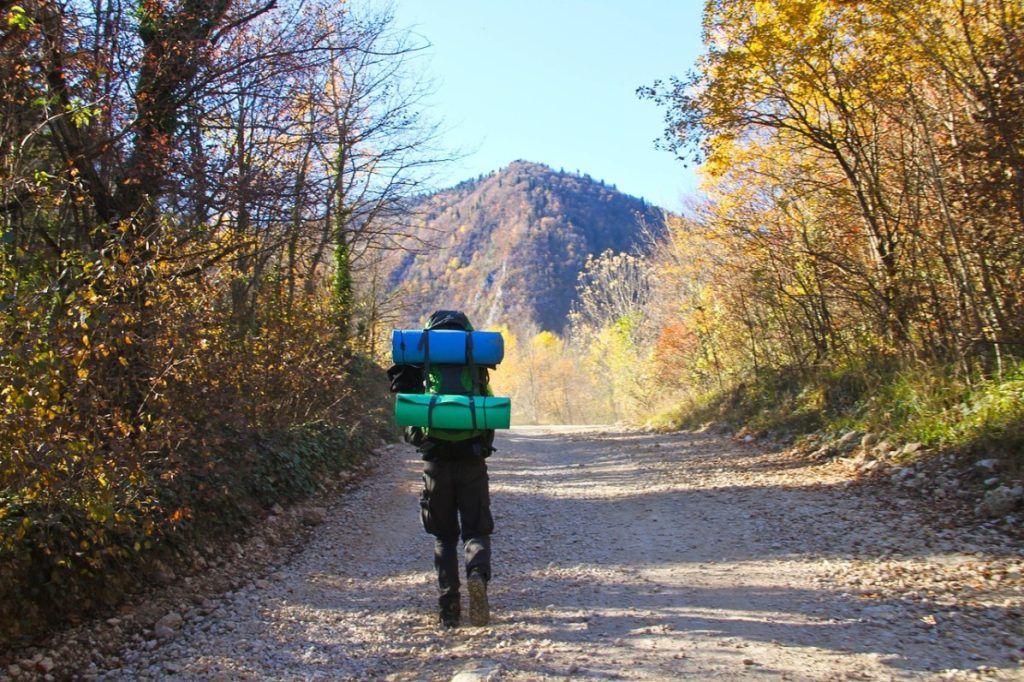
Traveling is a bold and liberating experience that fosters self-reliance, self-discovery, and enduring memories. Whether you’re a seasoned traveler or organizing your first solo trip, a little safety planning can make the trip safer and more pleasurable. You will meet people from different backgrounds, try new foods, and learn about cultures that are beyond anything you could have imagined. However, for beginners, the excitement usually outweighs the importance of safety planning. The goal of this beginner’s guide to safe travel is to prepare a safer trip itinerary for first time travelers. These safety guidelines will make your trip unforgettable for all the right reasons, from digital security and cultural etiquette to packing tips and travel insurance. Following these beginner’s travel safety rules ensures that your first journey is filled with joy, not worry. 1. Research Before You Go A little planning makes a big difference. Learn about the local language, transportation, neighborhoods, and emergency procedures. To avoid offending someone unintentionally, educate yourself on local traditions. Researching in advance helps travelers avoid danger, time wastage, and scams. It is one of the best safe travel tips. Pro Tip: Use apps like Rome2Rio or Google Travel to plan your itinerary. Always find out if your destination requires any special permits or visas. 2. Get Travel Insurance Travel insurance serves as your lifeline for safe travel and is more than just paperwork. The cost of a single medical emergency overseas can reach thousands. Additionally, insurance covers theft, lost luggage, and cancellations. Pro Tip: If you plan to participate in adventurous activities like hiking or water sports, choose policies with “adventure coverage” for benefits. 3. Keep Digital & Physical Copies of Documents Having backup copies of your passport, visa, airline tickets, and insurance is always a good idea. Store printed copies on cloud services and keep them separate. Pro Tip: Keep a laminated sheet of paper with the contact details and your embassy’s information in your wallet. 4. Manage Your Money Smartly Avoid carrying too much cash. The safest way to carry money while travelling is by using prepaid forex cards, digital wallets, and a mix of debit and credit cards. Money should be kept in different locations for your wallet, bag, and hotel locker. Pro Tip: Always keep small change on hand for tips, food vendors, and local transportation. 5. Stay Aware in Public Transport Be attentive during your travel in public transportations like buses, trams, and crowded metros. Keep an eye on your stations & schedules. Pickpocketing or thefts are common in these areas. Pro Tip: Plan on using verified ride-hailing services or registered taxis if you’re running late. 6. Blend In With Locals Those tourists who stand out are frequently targeted. Wear loose clothing, but stay away from branded bags, expensive watches, and flashy jewelry in unfamiliar places. Pro Tip: Learning five to ten basic local words makes you more approachable and secure. 7. Carry a First Aid & Hygiene Kit Travel can be ruined by minor problems like headaches or stomachaches. When pharmacies are not open, a first aid kit saves time. Bring masks, sanitizer, medications, and reusable water bottles. Pro Tip: Important medications should be kept in your carry-on rather than checked luggage. 8. Share Your Itinerary Always inform someone of your travel itinerary. This is crucial for the safety of solo travelers in particular. Pro Tip: When traveling a long journey, use Google Maps or WhatsApp to share your current location in real time. 9. Stay Cautious Online WiFi in public places is convenient but dangerous. Passwords or banking information are easily stolen by hackers. Pro Tip: Avoid making payments online over public networks and use a VPN for safer browsing. 10. Try Local Food Safely Although food is cultural, cleanliness is important. To test the stomach’s tolerance, start with small portions. Pro Tip: Restaurants with consistent local crowds are always a good indicator of tasty and safe food. 11. Know Emergency Numbers Make a note of the local embassy, ambulance, and police contacts. Put them in writing as well; don’t rely just on your phone. Pro Tip: The universal emergency number 112 is currently in use in many countries. 12. Choose Safe Accommodations Make a reservation after reading several reviews. Examine the area, the security features, and the connectivity. Make sure wherever you stay, they are secure and have locks. For low-budget travelers, hostels, homestays, and dharamshalas are good options. Pro Tip: Hostels exclusively for women or accommodations close to major roads are safer for lone travelers. 13. Solo Travel Safety Although it is liberating, traveling alone calls for extra caution. Avoid going for a late-night stroll by yourself, don’t tell strangers your entire itinerary, and follow your gut. Pro Tip: Keep a personal alarm, pepper spray, or whistle on hand in case of an emergency. 14. Packing Essentials A first-time visitor makes the mistake of overpacking. Only bring items you’ll need, and keep necessities close at hand. It is essential to have a portable charger, a water bottle, a travel pillow, a sturdy backpack, and a universal adapter. Pro Tip: To prevent overweight baggage, use packing cubes to organize it. 15. Food & Water Safety Water-borne diseases are common for beginners abroad. Limit your intake to cooked food and sealed bottles of water. Don’t eat salads, ice cubes, or undercooked meat in new places. Pro Tip: Keep rehydration salts on hand to prevent dehydration. 16. Trust Your Instincts Your best defense is intuition. If you sense that someone, a place, or a deal is unsafe, leave. Pro Tip: Safety measures should always come before courtesy. FAQs Q1. What is the best safe travel tip for beginners? Research your destination and stay alert at all times. Q2. Should beginners always buy travel insurance? Yes. Emergencies can occur on even short trips; insurance reduces stress and costs. Q3. What should I pack for safe travel? It is advised to keep a secure wallet, reusable water bottle, universal adapter, and first aid kit. Q4. How can I stay
Best Time to Visit Bali for Beaches & Culture
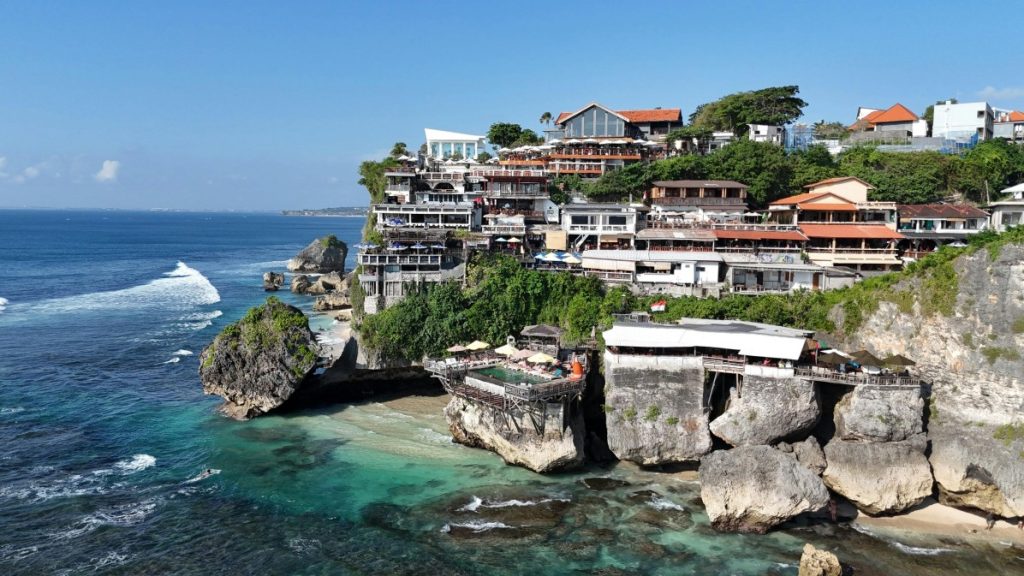
Bali effortlessly sparks your creativity. You can find golden beaches, emerald rice terraces, colorful temples, and fun festivals to keep any traveler entertained. When it comes to your ideal Bali, timing is important; the right season will allow your beaches to sparkle, your cultural experiences to deepen, and your holiday to remain stress-free. If you are a first timer, this guide is for you! We will give you the best time to visit Bali, weather breakdown by month, festival calendar, avoiding crowds, and other travel advice to plan your trip using The Tarzan Way, your AI-powered personalized trip planner. Bali Weather by Month: A Quick Overview Getting to know the weather in Bali is the first step for your trip planning. There are two main seasons in Bali: Dry Season vs Wet Season Dry Season (April to September): This is the sunniest time, perfect if you want to spend a lot of time on the beach, enjoy outdoor activities, and visit temples. You can expect clear blue skies, flat seas, and little rain. Wet Season (October to March): Expect heavy rainfall, humidity, and occasional storms. Don’t worry though—rain usually does not last long. Bali is still beautiful, just a little wetter. Pro Tip: Even in the wet season, mornings are often sunny, making it possible to enjoy sightseeing before the afternoon showers. Best Time to Visit Bali for Beaches If your main goal is lounging on soft sand, surfing, or snorkeling, timing is everything. Peak Beach Season: April to October Calm seas, clear waters, and sunny skies dominate. Popular beaches like Kuta, Seminyak, and Nusa Dua are at their best. Perfect for surfing beginners and experienced surfers alike. Best Months for Bali Beaches: July, August, and September—sunny days with gentle waves. Surfing Tip: The west coast is great from May to September, while the east coast shines from November to March. If you want to catch epic waves, check out The Tarzan Way’s surf-focused itineraries for personalized guidance. Best Time to Visit Bali for Culture Bali is more than just beaches; it is a living, breathing cultural gem. There are temples, ceremonies, and festivals everywhere, and scheduling your visit can change everything. Bali Festival Season: March to October Galungan & Kuningan: Celebrate the triumph and balance of good over evil with temple ceremonies, dances, and colorful offerings. Nyepi (Balinese New Year): A fascinating experience when the whole island honors a day of silence. Streets are deserted, flights are suspended, and a spiritual reset takes place unlike anywhere else in the world. Visiting Bali during Nyepi Festival: If you love culture, it’s worth timing your trip around this festival—but plan ahead since transport and activities are limited. The Tarzan Way can help schedule your activities perfectly around Nyepi for a truly immersive experience. Bali Crowds and Tourist Season Peak Season (July–August, Christmas–New Year): Expect busy beaches, higher hotel rates, and full attractions. Shoulder Season (April–June, September–October): Fewer crowds, pleasant weather, and great for photography. Off-Peak/Wet Season (January–March): Less crowded, more budget-friendly, but some rain expected. Cheapest Time to Visit Bali: January, February, and early March—perfect for travelers seeking deals and fewer crowds. Month-by-Month Guide: Bali Weather & Activities Month Weather Beach Activities Cultural Highlights January Wet, occasional storms Swimming limited Temple visits, indoor workshops February Wet, humid Low tourist crowds Local festivals, rice terrace walks March Transition to dry Surfing picks up Galungan preparations April Dry begins Ideal for beaches Temple ceremonies May Dry, sunny Snorkeling, diving Art festivals June Dry, cooler mornings Surfing, beach hopping Cultural tours July Dry, peak season Surfing, sunbathing Local performances August Dry, sunny Beach sports & surfing Ubud arts events September Dry, warm Perfect for beaches Temple visits October Dry to wet transition Surfing possible Festival season ends November Wet begins Limited beach time Temple ceremonies December Wet, humid Beaches less ideal Christmas celebrations, indoor activities Tips for First-Timers Visiting Bali Plan your beaches and cultural visits separately. Sunny mornings for temples, afternoons for beaches. Book accommodation early during peak months to avoid inflated prices. Use The Tarzan Way to customize your itinerary based on your interests and preferred timing. Pack for unpredictable weather if traveling during the wet season. A light raincoat and waterproof shoes are lifesavers. Frequently Asked Questions Q1. What is the best month to visit Bali? For first-timers, April to September is ideal for sunny beaches and cultural exploration. July and August are peak season months with vibrant festivals. Q2. Is Bali worth visiting during the rainy season? Yes! While it rains more, the island is lush and less crowded. Indoor activities, temples, and cultural tours remain accessible. Q3. Which season is best for experiencing Balinese culture? Dry season (April–September) is perfect. Festivals like Galungan and Nyepi happen around this time, offering an authentic cultural experience. Q4. When is the cheapest time to travel to Bali? January to early March is budget-friendly with fewer tourists. Hotels and flights are cheaper. Q5. Is July a good time to visit Bali? Absolutely! It’s sunny, perfect for beaches, and festival season is in full swing. Just expect more crowds. Q6. What is Nyepi Festival and should I plan my trip around it? Nyepi is the Balinese Day of Silence marking the new year. It’s unique, peaceful, and spiritual. If you plan carefully, it’s a one-of-a-kind cultural experience. Q7. Is Bali good for surfing year-round? Yes, but the west coast is best May–September, and the east coast shines November–March. Personalized surf itineraries are available through The Tarzan Way. Q8. How many days are enough for a Bali trip? A 7–10 day trip lets you cover beaches, cultural spots, and a couple of nearby islands comfortably. Q9. Is Bali too crowded during peak season? It can be busy, especially Kuta and Seminyak. Visiting during shoulder months like April–June or September–October ensures fewer crowds. Planning Your Bali Adventure the Smart Way Choosing the best time to visit Bali depends on your priorities—beaches, culture, or budget. For first-timers, the dry season between April and September offers the



